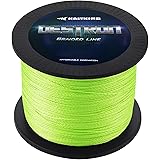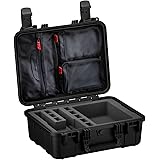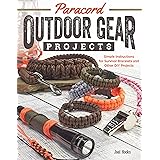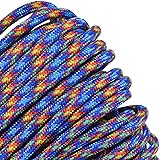Imagine a scenario where modern conveniences vanish, resources dwindle, and the pressing need for sustenance becomes your paramount concern. In such stark circumstances, the ability to improvise, to craft essential tools from your immediate environment, transforms from a niche skill into a fundamental pillar of survival. The video above brilliantly showcases this ingenuity, detailing the construction of an indigenous DIY survival crossbow from readily available materials like bamboo.
The mastery demonstrated in fashioning a functional projectile weapon underscores a critical aspect of wilderness survival: the capacity for self-reliance. While a modern hunting bow or firearm offers efficiency, understanding how to construct a primitive crossbow can be a game-changer when those sophisticated tools are unavailable. It’s not merely about creating a weapon; it’s about reclaiming agency in a challenging environment and securing vital calories.
The Imperative of Primitive Tool Crafting in Survival
In any long-term survival situation, maintaining caloric intake and hydration are non-negotiable priorities. As eloquently stated in the video, the urgent need to “replenish calories and water” often drives innovation. When foraging alone proves insufficient, or when trapping requires more passive techniques, an active hunting method, even for small game, becomes indispensable.
Developing proficiency in primitive tool crafting provides a significant psychological advantage. It fosters a sense of control and competence, combating the helplessness that can accompany dire circumstances. The ingenuity involved in transforming raw materials into a functional tool like a homemade crossbow is a testament to human adaptability, a skill set that resonates deeply within the bushcraft and survivalist communities.
Deconstructing the Primitive Crossbow: Essential Components
The video identifies four core components critical to the functionality of any crossbow, primitive or otherwise: the body, the limb, the string, and crucially, the trigger. Each element plays a pivotal role in harnessing and releasing kinetic energy. Understanding the precise function and optimal material selection for each part is paramount to constructing an effective primitive hunting bow.
The Body (Stock): Foundation of Power
The body, or stock, of the crossbow serves as its structural backbone, providing stability and housing the trigger mechanism. In the context of a bamboo crossbow, a thick, straight section of bamboo is an excellent choice due to its inherent strength-to-weight ratio and natural hollow structure, which can simplify some construction aspects. Alternatively, a seasoned hardwood like oak, ash, or hickory could be painstakingly carved, offering superior durability though requiring significantly more effort.
The stock must be robust enough to withstand the immense forces generated upon firing, yet ergonomically shaped for comfortable handling and aiming. Careful attention to its balance and rigidity directly impacts shot accuracy. Imagine if the stock flexed unpredictably; precision shooting would become virtually impossible, leading to wasted effort and potentially lost game.
The Limb (Prod): Generating Propulsive Force
Referred to as the limb or prod, this component is the heart of the crossbow’s power, storing and releasing the energy that propels the projectile. The video’s demonstration of bamboo’s flexibility highlights its suitability, but other materials like osage orange, yew, or even certain types of composite wood can be used, depending on availability. The limb’s design dictates the draw weight and, consequently, the power and range of the crossbow.
Crafting a strong, resilient limb requires an understanding of material physics. It must bend significantly without fracturing, consistently returning to its original shape after each shot. Proper tapering and tiller (the curvature and balance of the limb) are advanced considerations that optimize energy transfer and prevent premature material failure, enhancing the effectiveness of your DIY survival crossbow.
The String: The Engine of Release
The string connects the ends of the limb, transferring the stored energy to the arrow upon release. Its material selection is critical, requiring immense tensile strength, minimal stretch, and resistance to abrasion. Natural fibers such as sinew (animal tendons), rawhide, twisted plant fibers (like nettle, yucca, or dogbane), or even braided hair can be painstakingly processed into a functional string.
The process of twisting and braiding these fibers into a strong cordage demands considerable patience and skill. A poorly constructed string will either snap under tension, stretch excessively reducing power, or fray quickly, rendering the entire homemade crossbow inoperable. Achieving the correct length and tension ensures optimal performance and safety.
The Trigger Mechanism: The Apex of Precision
As emphasized in the video, the trigger mechanism is where precision is paramount; it “has got to be dead on.” This intricate component holds the string under tension until released by the operator, demanding exacting tolerances to ensure both safety and accuracy. A rudimentary primitive trigger might consist of a simple wooden “nut” or sear that catches the string, integrated with a lever that, when depressed, allows the string to be released.
The design must prevent accidental discharge while allowing for a smooth, consistent release with minimal effort. Imagine if the trigger mechanism was unreliable, either releasing prematurely or requiring excessive force; it would compromise both the safety of the user and the accuracy of the shot. Expert craftsmanship in this area differentiates a potential hunting tool from a dangerous, unwieldy contraption, making it the most challenging part of any survival bow construction.
Crafting Arrows for Your DIY Survival Crossbow
A crossbow is only as effective as the projectiles it launches. The video briefly notes the need to “make some arrows,” a task that is an art form in itself within primitive technology. Shafts can be crafted from straight shoots of dogwood, cane, or even trimmed sections of bamboo, carefully straightened over heat.
Fletching, traditionally made from split feathers, stabilizes the arrow in flight, ensuring a true trajectory. Points can range from fire-hardened wooden tips for small game to knapped stone points or sharpened bone for larger targets, requiring specific techniques for attachment and reinforcement. The overall balance and weight of the arrow must be carefully matched to the power of the primitive crossbow to achieve maximum effectiveness and accuracy.
The Art of Primitive Hunting with a Homemade Crossbow
Successfully hunting with a homemade crossbow demands far more than just constructing the weapon; it requires an intimate understanding of the environment, animal behavior, and ethical considerations. Patience, stealth, and keen observation become your primary tools. Locating tracks, understanding feeding patterns, and moving silently through the landscape are essential for closing the distance to game.
Targeting small animals for calories, as suggested in the video, often involves setting up ambushes near watering holes or known game trails. Effective range for a primitive crossbow will be significantly shorter than modern counterparts, necessitating close-range shots. The ultimate goal is a quick, humane kill to secure the vital sustenance needed for survival, reinforcing the deep connection between skill, effort, and survival in the wild.











